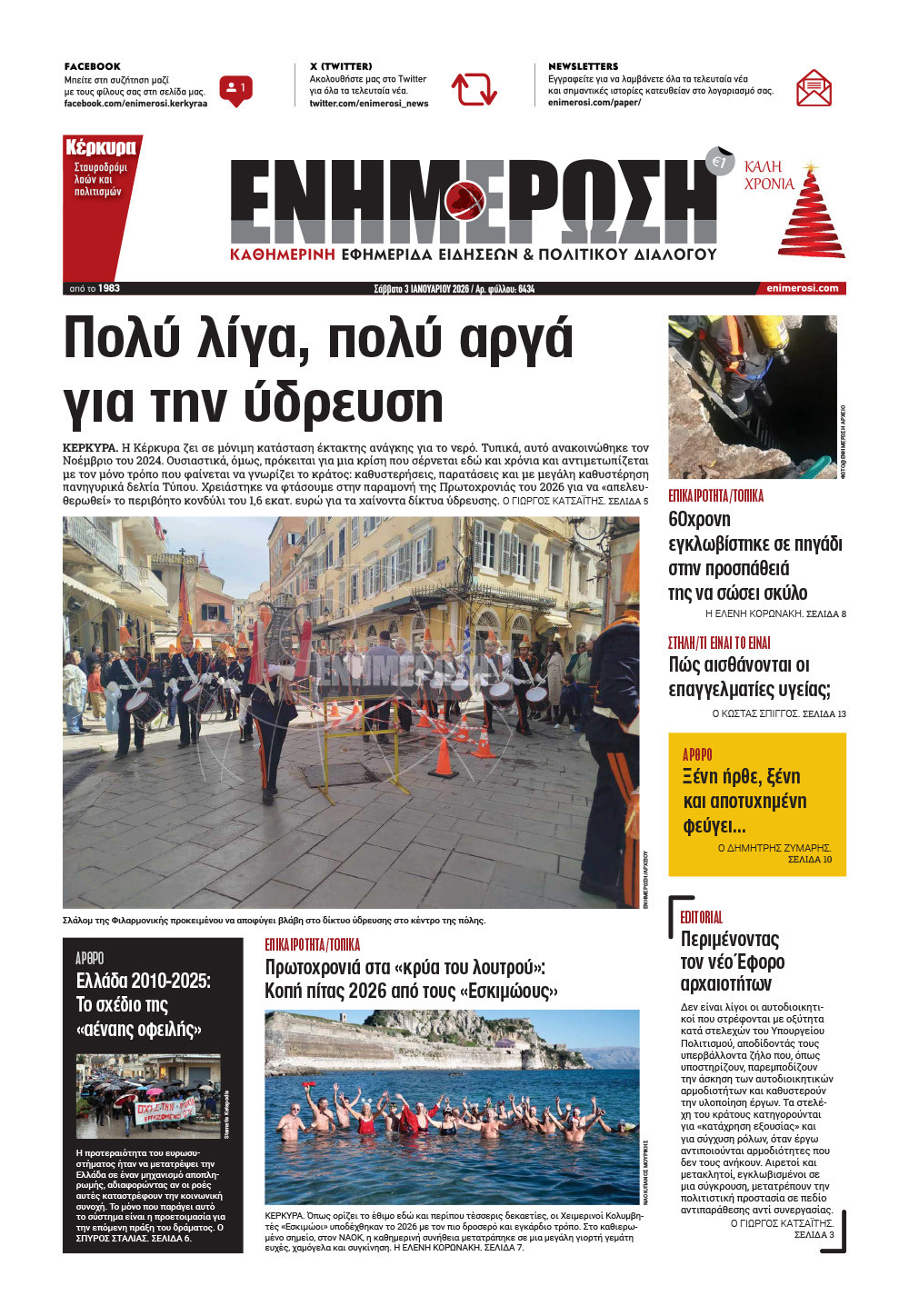Beach refuges for Caretta Caretta in South Corfu unprotected and unmarked
 Photo: Enimerosi
Photo: Enimerosi
CORFU. Incidents like the one that occurred on Saturday, 13 July, highlight how important public awareness and education are, as well as the implementation of serious and substantial measures for the protection of the species.
On Saturday morning, July 13, on Kanoula beach in South Corfu, a quad bike with two people went onto the beach and got stuck in the sand. In their attempt to get unstuck, they began revving the engine, which provoked a reaction from the beachgoers, as the beach is home to one of the largest, if not the largest, refuges for caretta caretta sea turtles in Corfu. In the end, according to reports, the beachgoers helped the riders to get unstuck and leave.
The incident once again brought to light the insufficient protective measures for turtle nesting beaches by state authorities. In South Corfu, as members of the South Corfu Natura Friends and Protection Association report, there is no signage on the beaches to prohibit vehicular access. Additionally, there are no markings on the turtle nests to protect them, except when placed by private individuals. As a result, those unaware of the nests' existence descend onto the beach and endanger the incubation of the threatened caretta caretta turtle species.
On Kanoula beach, which is relatively isolated, only the locals know of the nests' existence and try to mark them with reeds to alert visitors. Meanwhile, on Arkoudila beach, any markings on the nests have been placed by the person who rents out the sunbeds.
Refuge
The coasts of Greece, with the Ionian Islands playing a leading role, serve as refuges for the reproduction of sea turtles. Following the recent incident, the Corfu Environmental Protection Association issued a statement, which reads:
"The protection of the caretta caretta sea turtle is very important for the environment of the Ionian Sea, and it is clear that many residents, beachgoers, and even business owners are trying to protect the nests by marking them with sticks and signs.
Incidents like today's (July 13) highlight how important public awareness and education are, as well as the implementation of serious and substantial measures for the protection of the species.
On June 25, the Corfu Environmental Protection Association organised an online training session, during which officials from the Zakynthos, Ainos National Parks, and Ionian Islands Protected Areas Management Unit presented the caretta caretta nest recording protocol followed by all agencies in Greece. A small number of individuals from Corfu will go for field training in Zakynthos during the first week of August.
Appeal for help from island residents
The Association extends an invitation to the island's residents: if you also want to participate in the protection of the caretta caretta sea turtle, send an email to [email protected] with your name and a contact phone number.
You can help by sending photos of tracks and nests, participating in educational activities, or more actively by taking part in field research.
We remind you that a decision had been made by the Ministry of Environment to create a branch of the Management Unit of Zakynthos, Ainos National Parks, and Ionian Islands Protected Areas in Corfu. Unfortunately, so far, no responsible party has ensured the allocation of funds for the facilities and materials, as well as the hiring of personnel to staff the local branch. Thus, the protected areas of Corfu, despite various assurances over time, remain essentially completely unprotected."
Enimerosi contacted the Mediterranean Association to Save the Sea Turtles (Medasset), whose programme manager, Dr. Nikos Simantiris, stated: "In Greece, the caretta caretta species nests mainly in the Gulf of Laganas and Kyparissia Bay, while also showing sporadic nesting along the coastline of the Ionian Sea, in many areas of the Aegean, and in Crete. At Medasset, we actively contribute to the protection of the sea turtle, focusing on a sustainable future for the marine environment."
VASSILIS PANTAZOPOULOS
Photo: Enimerosi











